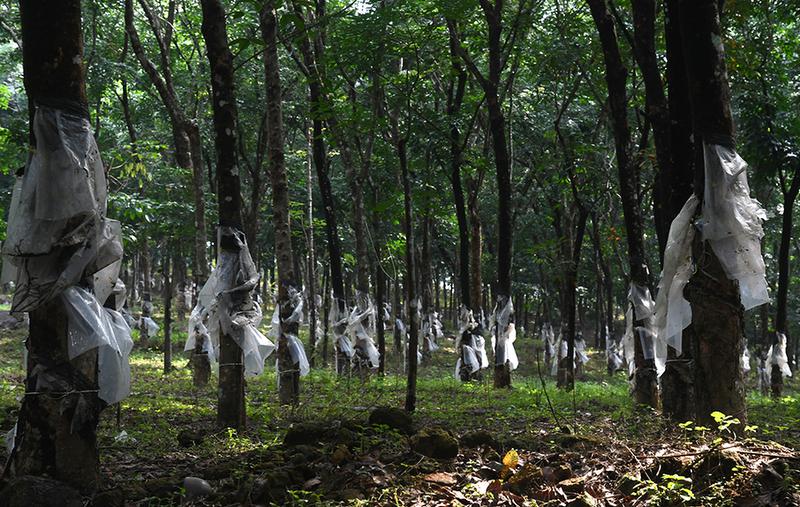

Rubber cultivation in N-E to lower imports
The north-eastern region, comprising the seven sister States, will likely contribute nearly one-third of the country’s total rubber production soon, thereby helping bridge the demand-supply gap in the rubber industry.
It will, as result, bring down the quantum of imports, which increased to a three-year high last fiscal.
Under a project launched by the Automotive Tyre Manufacturers’ Association (ATMA) in collaboration with Rubber Board, nearly two lakh hectares (lh) in the north-eastern States and West Bengal will be brought under rubber plantation over a period of five years involving an outlay of ₹1,100 crore.
Once the objective of developing plantations in an additional two lh under the project is achieved, it is estimated that the share of these States will increase to 32 per cent of the total production from the current 18 per cent.
The availability of land and suitable agro-climatic conditions make the region a favourable destination for growing rubber.
Area of importance
The project activities are being undertaken in Arunachal Pradesh, Assam, Manipur, Meghalaya, Mizoram, Nagaland, Tripura and West Bengal. Assam will have the largest area under plantation at close to one lh.
Close to 1.65 crore rubber plants have been successfully planted in the region so far.
According to KN Raghavan, Executive Director, Rubber Board, the plantation activity started in 2021 and already close 30,000 hectares have been brought under rubber cultivation primarily in Assam and Tripura.
The plan is to add another 50,000 hectares during 2023 and 60,000 hectares each in 2024 and 2025, thereby touching two lh.
“Raw material security has been reckoned as a major area of importance for any country in the new world order. Given the importance of such strategic raw material, the country needs to focus on increasing the domestic NR (natural rubber) production so as to become self-reliant and avoid dependence on import of this critical raw material to the maximum extent possible,” Raghavan told newspersons at a press conference in the city on Friday.
“If we (the demand) continue to grow at the rate at which we are growing then rubber availability would come down to alarming levels.
“There is a huge potential in the north-eastern region, it is like a goldmine. So with a slight nudge from the government the four big tyre companies which account for nearly 90 per cent of the total market have come together and invested in the project,” Satish Sharma, Chairman of ATMA, said.
The project involves planting material of 55 lakh successfully transported from Kerala to the North-East by rakes over the last one year despite logistic challenges.
The reporter was in Guwahati at the invitation of ATMA